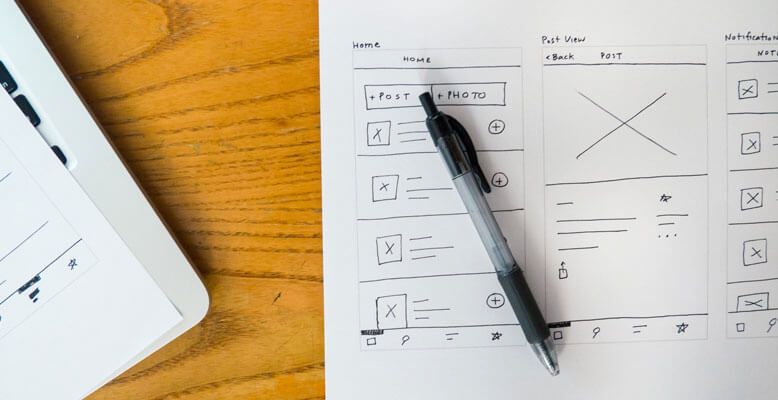To Chart Your B2B Customer Journey, Pay Attention To These Three Stakeholders
It’s no secret that the lifecycle for typical B2B purchases is drastically more complicated than it was a decade ago. According to Forrester, 74% of business buyers are now conducting more than half of their research online before making an offline purchase.

Decision makers are much more informed prior to engaging with a salesperson. Not only has the internet made this path-to-purchase more complex; several different stakeholders across different functions are now involved in decisions, each one is looking for something different. As the number of people involved in a decision increases, the likelihood of purchase decreases.
Many B2B companies are looking for the best way to navigatethis changing landscape in order to sell and deliver their products and services to their target customer base. The most crucial first step in asserting your company’s place in the new B2B ecosystem is to create a customer journey map.
A journey map is a popular tool in many B2C companies – however, people don’t often think of it as a key resource in business-to-business transactions. The reality is that to keep up with changing consumer expectations, the consumer journey map is even more valuable to B2B companies than it is for the B2C space. However, the map must look a bit different to account for the several different parties involved in your decision process. For each group, you must factor in their end goals, how they gather information, and the content that resonates with them.
B2B decision making groups include three different roles: the decision maker, the decision influencer, and procurement.
The Decision Maker
Many B2B companies make the mistake of only going after the key decision maker – after all, by definition, they’re the person that makes the decisions. However, this approach alone is a mistake. The key decision maker is typically a C-Suite or VP-level executive. They are busy people – they don’t have time to explore online channels and forums for what products and services best meet their company’s needs.
Decision makers are basing their evaluation almost solely on input from internal subject matter experts, their IT team, and their procurement group. Their decision process is based on the organization’s priorities, policies and what will integrate the most seamlessly with their existing systems and business processes.
Your journey map should clearly indicate whaich subject matter experts are most influential to your key decision maker, and the critical integration factors that executives consider when they’re evaluating solutions.
The Decision Influencers
Decision influencers are all about features. These are the people with the most skin in the game, so to speak – because after a decision about a purchase is made, they’re the ones that have to live with it. Influencers will carefully vet options on websites, forums, and by word of mouth to find the product/solution that best fits their needs from a functional standpoint.
These subject matter experts are typically one of the groups that will have the most sway when the decision maker is evaluating his or her options. Roles could vary from middle managers, VPs, or even more junior-level employees. When you’re constructing your journey map, be sure to do your due diligence to uncover who the real organization influencers are, and what they care about.
This also includes the IT team who ensures the data and interfaces of the products / services can “plug-and-play” with existing systems.
The Procurement Team
Procurement isn’t concerned with your product’s functionality, or its ease of integration – they’re looking at logistical information like contract terms, pricing, and vendor stability. But just because this team’s needs are more cut-and-dry doesn’t mean you should ignore them in your journey map. Members of the procurement team are key stakeholders in your B2B path to purchase.
To win over the procurement team, you must demonstrate why your company is worth the money – and the risk. Is your product or service scalable? Does it provide quality customer support? Will your current customers provide a referral regarding every important aspect of your solution? These are the questions procurement will ask, and your B2B customer journey map should reflect these key parts of this team’s vetting process.
A quality B2B journey map must chart the different purchase paths for all three of these stakeholder types. Customers that do this see a 50%+ improvement in revenue per account, and 40%+ reduction in customer acquisition costs. When you understand the challenges, needs, and motivations of your B2B customer via a journey map, you’ll also be able to reap the rewards.
If you are creating a customer journey, it isn’t complete until you have a comprehensive end-to-end research plan. Gold Research is the leader in in-store, online and at-home research. We have extensive experience in journey mapping, path-to-purchase research, deploying customer intercepts, in-store interviews, and mobile surveys for concept testing, marketing testing, satisfaction research, shopper insights, and mystery shopping. We can also act as an extension of your research team in helping with data processing, analysis, report development, and survey programming. Contact us at 1-800-549-7170 or send us an email for a free 30-minute consultation on this topic.

Awarded by Feedspot
![]()
Contact Us
1-800-549-7170
GoldResearch, Inc.
8000 I.H. 10 West | Suite 600San Antonio, Texas, 78230